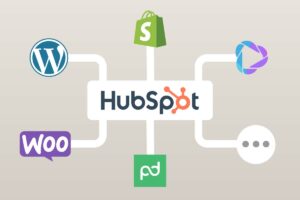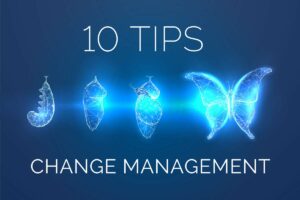In times of digital sales, it is imperative that marketing and sales work closely together and are very closely coordinated. For this reason, it’s important to know that email marketing is the most profitable marketing tactic in B2B sales. Whether it’s used to acquire new customers or maintain existing ones, email marketing is absolutely essential for B2B sales.
Interaction of
B2B Sales & Email Marketing
Info box DSGVO
The GDPR – what is allowed, what is not?
B2B email marketing requires a double opt-in process: business customers must also give their official consent to receive emails. By law, consent must be given twice: First, the customer enters his contact data in a form. In the second step, the registration is confirmed by a verification link via e-mail. The legally required double opt-in can also ensure that new contacts already express interest in the company and the associated products and services.
Infobox end
Adhering to all the steps required by the GDPR – namely the registration or consent to receive emails – we now take a look at how to make the most of email marketing for B2B sales.
4 important points that must always be considered in the beginning:
- Clear information: Business partners don’t have time to sift through long newsletters – all relevant information, benefits and USPs must be apparent at first glance.
- Advantages and relevance: It is important to highlight the benefits and relevance of the offer for this very customer. Ask yourself the question, “How exactly does customer XY benefit?” → the more personalized the offer, the more relevant it is for the customer.
- Customer understanding: In order to achieve a high level of success with the campaign, B2B emails must be personalized to address the individual needs of the industry. That’s why it’s essential to know your target audience, segment them and then tailor the campaign to the groups.
- Customization to Buyer’s Journey: Emails need to be customized depending on where the customer is in their Buyer’s Journey, as the need for information is different at each stage.
Email marketing for new customer acquisition
Before an email marketing campaign can be set up for potential customers, these leads – i.e. interested, potential customers – must first be generated, and there are various ways of doing this:
- Company website: It is important to equip key touchpoints on your own website with newsletter sign-up forms. Customers must be able to contact the company at any time. The most commonly used touchpoints are: Pop-ups or a newsletter sign-up section, links in the footer/header and a dedicated page with a contact form.
- Landing pages: Since landing pages are generally also used as “lead magnets”, e-mail addresses are frequently requested on them. This query is made, for example, in the course of offering a download of a free white paper or e-book.
- Social media ads: On social media channels frequented by potential customers, targeted ads can refer to the sign-up for the email distribution list – this can quickly turn initial prospects into so-called qualified leads.
- LinkedIn Outreach: On LinkedIn, direct customer contact can be established via direct messages by means of a personal profile. Through tools like LinkedIn Sales Navigator, this process can also be automated.
After you have defined and set up your own lead generation mix, you can start planning your email campaign. As mentioned above, it is of great importance to personalize or customize emails depending on the target audience and phase. In addition to the content of the emails, two things should be considered and tested via A/B testing:
- Subject line: The subject is the first piece of information prospects see from the email. Therefore, it is very important that it is appealing and makes the reader want to open the email in the first place and read on.
- Timing: The time at which emails are sent also plays a major role, as open and click-through rates can vary greatly depending on the time.
Email marketing for existing customer care
Email marketing is also indispensable for maintaining existing customers in B2B sales. Here, too, the heart of the matter is personalization and relevance for the customer.
Customers get a lot of emails and read what seems relevant to them: for example, if a company sells software, an email campaign could be set up regarding new features. If the company has published a new whitepaper, this can also be distributed to customers with an email campaign.
Email Campaign Automation
Email campaign automation can be very helpful and an essential part of both new customer acquisition and existing customer care campaigns. In our last two articles, we also explained in more detail how email marketing automation works exactly and what different marketing automation options are available. Nevertheless, we would like to briefly discuss it here as well.
B2B email marketing automation works with customer segmentation that allows for individual customer care: through customer relationship management systems such as HubSpot, it is possible to respond to customers individually and provide the highest possible level of personalization.
A big advantage is also that according to a survey by emfluence Marketing Platform, automated emails perform much better than manually sent emails.
Tracking - measure & increase engagement
To find out whether and to what extent the email campaign was successful, it should be tracked. Only by knowing how well or poorly the previous campaign performed can you figure out which aspects still need improvement.
Infobox Metrics and Benchmarks
Metrics and benchmarks in email marketing
- Open Rate – number of opens divided by the total number of emails sent.
- Click-through Rate – Total number of clicks divided by the total number of emails sent.
- Click-to-open ratio – Of the people who opened the mail, what percentage clicked?
- Unsubscribe Rate – total number of people who unsubscribed from the mailing list divided by the total number of mails sent.
- Complaint Rate – Total number of spam complaints divided by the number of mails sent.
Infobox end
If the opening rate is low, it may indicate an unattractive subject line. If the click-to-open rate is too low, perhaps the call-to-action was too weakly worded or not clearly evident. Depending on where there is “room for improvement”, the campaign and the structure of the email can be improved.
To avoid unrealistic notions of email performance in digital sales, it’s important to keep an eye on benchmark results in regular B2B sales to have a point of comparison. One example is Episerver’s Email Marketing Benchmark 2020.
Conclusion
Email marketing is an essential tool in B2B sales – for acquiring new customers as well as for maintaining existing ones. Moreover, personalized and automated emails make sales even more successful and companies can significantly increase their ROI with them.
Of course, the application varies from company to company and also depending on the industry and customer segment. We are happy to provide support in this regard and help with the optimal implementation of email marketing campaigns.
Adrienne, David, Hermann, Johannes, Katharina B., Katharina T., Stefan K. & Stefan G.





